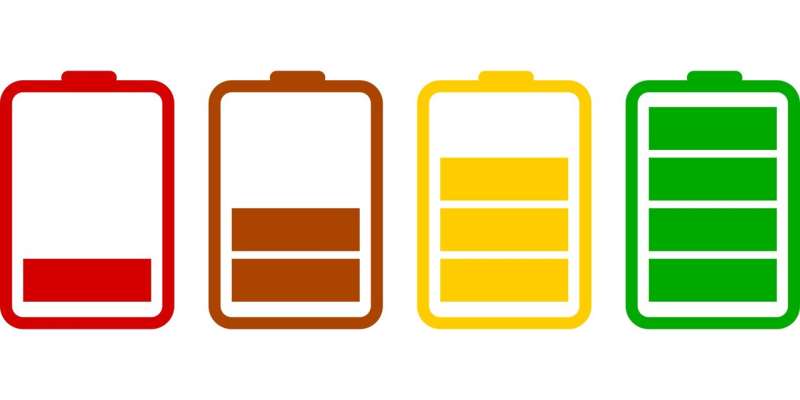Credit: CC0 Public Domain
We live in a battery-powered world, and as electronics steadily permeate its every corner, the need to find robust batteries grows increasingly important. Today, most devices run on lithium-ion batteries; and while these are generally safe, sometimes they have been known to catch fire or explode.
An alternative that is quickly growing in prominence within the research community is the all-solid-state lithium battery (ASSLB). Unlike lithium-ion batteries where the electrode is solid and the electrolyte is liquid, in ASSLBs, both electrode and electrolyte are solid, and they are extremely safe. However, this very property poses a problem: During operation, the volumes of the electrolyte and electrodes change, particularly in high-energy storage batteries. This can cause their surfaces to detach, resulting in poor performance.
If high performance ASSLBs are to be developed, the complex structures at the interfaces will need to be scrutinized in detail; or so Prof. Yong Min Lee from Daegu Gyeongbuk Institute of Science and Technology (DGIST) believes: "While most researchers have focused on developing new materials or improving the properties of existing all-solid-state-lithium batteries, we opted for a different route and decided to find solutions to minimizing the defects in the designs of electrodes and cells. This led us to wonder, 'Is there a way to quantitatively analyze the defects in these batteries?'"
Prof. Lee and team found the answer to their question when they came up with a clever technique: a 3-D digital twinning platform in which the microstructures of the solid-solid interfaces can be rendered as detailed 3-D replicas of the real thing. The details of their study are published in Elsevier's Nano Energy.
Using the platform, Prof. Lee and team explored the electrode-electrolyte interfaces of an oxide-based ASSLB, arguably the most promising kind of ASSLB. They captured 2-D image slices of a select target area, sequenced the images to digitally reconstruct a 3-D structure, and then carried out structural analyses. As expected, they found that the ASSLB's specific contact area was much less than that of lithium-ion batteries. This validated the efficacy of their method.
Excited about these results, Prof. Lee explains the immense potential of this technique: "Given the broad applicability of this technique, we're sure that its benefits can extend to all electrode-containing devices. But for now, we're are confident that our technique will help researchers save time and money while easily checking for defects during battery fabrication processes, helping with optimizing design, and ultimately speeding up the commercialization of all-solid-state batteries."
More information: Joonam Park et al, Unraveling the limitations of solid oxide electrolytes for all-solid-state electrodes through 3D digital twin structural analysis, Nano Energy (2020). DOI: 10.1016/j.nanoen.2020.105456
Journal information: Nano Energy
Provided by DGIST (Daegu Gyeongbuk Institute of Science and Technology)























